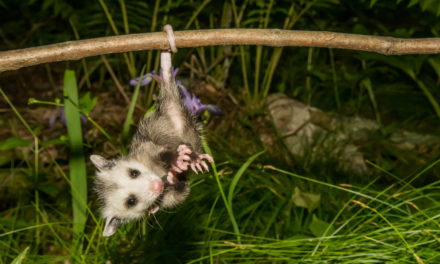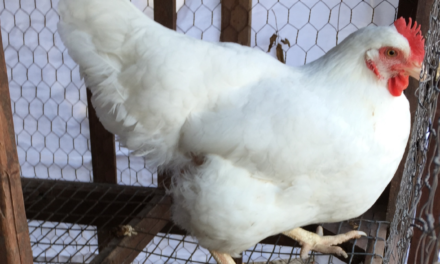I love teaching about chickens! Recently I taught a seminar and one thing the first time “flocksters” shared in common was a desire to discover which chickens did best in confinement and were easy to raise. It’s hard to briefly “talk chicken” when they are one of my passions.
 I want to give you a synopsis of the breeds that lay the most eggs with the least work. We will learn more about the American Standard of Perfection recognized by the American Poultry Association (APA). This top photo is of a hen and chicks in Uganda that would be considered a landrace: a population of chickens that have been developed over centuries through natural selection to meet the local needs and the local environment. The Icelandic chicken is another example of a landrace that can endure extremely cold weather.
I want to give you a synopsis of the breeds that lay the most eggs with the least work. We will learn more about the American Standard of Perfection recognized by the American Poultry Association (APA). This top photo is of a hen and chicks in Uganda that would be considered a landrace: a population of chickens that have been developed over centuries through natural selection to meet the local needs and the local environment. The Icelandic chicken is another example of a landrace that can endure extremely cold weather.
Let’s start with a few definitions that will be helpful to the first-time flocksters.
Broody: this is when a laying hen goes all glassy-eyed, sits on the nest all day and wants to stay there for 21 days and hatch out some chicks. If you are in an urban setting where you are limited in numbers, you may not want to tie up a hen for months (they love to care for the new chicks too) so a breed that is “non-broody” is a better fit.  When a hen goes broody, her pituitary gland releases the hormone prolactin, which causes her to stop laying. Many breeds have had the broodiness bred out of them to increase egg production. I cherish any hen that will succeed in hatching out chicks, and they are banded and not culled. This is my excellent Mama Melba who will nurture a brood for months.
When a hen goes broody, her pituitary gland releases the hormone prolactin, which causes her to stop laying. Many breeds have had the broodiness bred out of them to increase egg production. I cherish any hen that will succeed in hatching out chicks, and they are banded and not culled. This is my excellent Mama Melba who will nurture a brood for months.
Pure Breeds: a standard or pure breed is one that has a genetically pure line with a common origin, conformation (overall body shape) carriage, similar weight, and other identifying characteristics (such as the Dominique always displays a rose comb with a short upward turning spike). When bred, they will reproduce “true to type” and will have the traits of the parents. One of the important advantages of pure breeds have over hybrids is it’s possible to predict their adult size, and likely behavior patterns, all of which are essential factors in deciding if they are right for your farmstead.
 Hybrids: a hybrid is a cross between two or more breeds. It is the offspring of a rooster and a hen of different kinds which may themselves be hybrids. Such a bird will not breed true and thus unable to produce chicks with their same characteristics. Hybrid birds tend to be more vigorous and productive than pure breeds, and many breeds come to point of lay much quicker than a standard breed, but they also are not as long-lived as a pure-bred. An advantage to many hybrids is that they are auto-sexing which means that the pullet is one color and the cockerel’s another making it much simpler to sex.
Hybrids: a hybrid is a cross between two or more breeds. It is the offspring of a rooster and a hen of different kinds which may themselves be hybrids. Such a bird will not breed true and thus unable to produce chicks with their same characteristics. Hybrid birds tend to be more vigorous and productive than pure breeds, and many breeds come to point of lay much quicker than a standard breed, but they also are not as long-lived as a pure-bred. An advantage to many hybrids is that they are auto-sexing which means that the pullet is one color and the cockerel’s another making it much simpler to sex.
Silver Laced Wyandotte Rooster. Dual-purpose breed: is a breed that is raised for both meat and egg production. Dual-purpose or heavy breeds do not lay as many eggs as a breed designed just for egg production and won’t grow as rapidly for meat as the Cornish-Cross will, but they are the quintessential homestead chicken where self-sufficiency requires the use of breeds that will hatch “true.” They will lay longer and they are less prone to become exhausted after a year or two of great egg laying like most hybrids. The ISA Brown is an example of a dual-purpose hybrid. 
This photo is of an Old English Game cock with his comb and waffle cropped. They must be cut off to show them. These are very aggressive and flighty; cocks will fight to the death.
Flighty: easily excited, very athletic. Translation: will fly everywhere and over any but the tallest fences and doesn’t do well in confinement. Great birds but they usually do not care to be picked up. They need to be handled often which will tame them down. They love to free-range and do not do as well in confinement. The Leghorn is a great example of a flighty bird who will scale all but the tallest fences. I love Leghorns, so to me, they are worth the extra work.
I hope that this was helpful and you’re more familiar with some basic terms describing chicken breeds.
I hope you have a wonderful poultry day! Anne May






